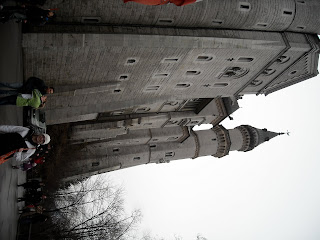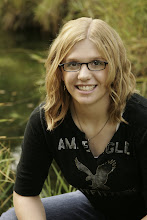Munich's location is just north of the Bavarian Alps and is the Capital of Bavaira, Germany. It is home to about 1.3 million people and is the 3rd largest city in Germany. The native name Muenchen, comes from the old german word Moenche, which means 'monks'. It gets its name from the Benedictine order who founded the city. 1158 is the assumed foundation date which is the earliest it was mentioned in documents. The city plays host to one of Germany's largest festivities known as Oktoberfest. (yes I do realize I spelled it with a 'k', that's how you spell it in german) If you don't already know what Oktoberfest is, it's basically just a huge fest where people from all over the world come to Munich over a period of 2 1/2 weeks to drink a lot of beer. Approximately 6 million people attend the fest every year. Munich is known world-wide for it's beer-brewing business and nowhere is it taken more seriously than in Munich. Bavarians are said to be the world's biggest beer consumers. The average intake is about 240 litres of beer per person. yuck!!
Frauenkirche (in Munich)-
This church is one of the main, if not the main site of Munich. The site of the church was originally occupied by a small chapel that was dedicated to the virgin Mary and was built in the 13th century. But about 200 years later a much bigger church, Frauenkirche, was built there by architects Joerg von Halspach and Lukas Rottaler. It was finished in 1488 but the very distinctive copper onion domes were not added until 1525. It is now one of Germany's largest Gothic structures. It can hold a congregation of approximately 2000 people.
Frauenkirche
This is the small little village that we stopped at during our tour in between the two castles. It was such a cute little town and I loved the setting of it right in the mountains. I couldn't find much information about it except that it is famous for its production of a Passion Play and is used in a popular german tongue-twister. The Passion Play resulted from a vow made by the people of the village that if God spared them from the effects of the bubonic plague then they would perform a passion play every ten years. It started in 1634 but is now played in years ending in zero, which means it will be performed this year. It consists of about 2000 actors, singers, musician, and technicians, most of which are residents of the village.
Oh yeah and here is the cute little tongue-twister (remind me to say it for you when I get home)
" Heut kommt der Hans zu mir, / Freut sich die Lies/ Ob er aber ueber Oberammergau, /Oder aber ueber Unterammergau, / Oder ueberhaupt nicht kommt, / Dass ist nicht g'wiss."
Translation- Hans is coming today/ Lies rejoices/ Whether he's coming via Oberammergau/ or via Unterammergau/ Or not coming at all/ that is unknown. :)
King Ludwig II-
King Ludwif II took the Bavarian throne in 1864 at the age of 18 after the death of his father Maximilian the II. He led an unusual and solitary lifestyle. His unique style, and passion for building castles led to him being known as the 'Fairytale King'. He was fascinated by the composer Richard Wagner and devoted himself to ensure financial security for the rest of Wagner's life. He spent most of a lonely childhood in Hohenschwangau, which little prepared him for the adult world where his word as king was a key factory in the course of his country. His desire for absolute monarchy came in conflict with the Munich court which led to him slowly withdrawing himself into his own childhood-fantasy world- a world reflected in the works of Wagner and which produced the Neuschwanstein, Linderhof and Herrenchiemsee Castles. He strove to create a world far away from reality all the up up to his death in 1886.
Neuschwanstein-
This castle began being built in 1869 on Swan rock above the beautiful Alpsee Lake. It's tall slender towers give it the image of a fairy-tale castle. It is 5 stories high and was built in a Romanesque style. Sadly, the king died during the construction of the castle causing it to be left unfinished. It took roughly 18 years to build what you see today and in total the king only spent about 172 days there. The tour of the castle takes you through all the finished room, which only takes about 30 minutes. The completed rooms include the throne room (minus the throne because it was never built), the dining room, bedroom, living room, study, and kitchen... which is hardly anything considering the size of the whole castle! Just as a fun fact... the barely-used bedroom had so many intricate wood carvings that it took 14 wood carvers 4 1/2 years to complete!
Taken from the village of Fuessen just beneath
This wasn't actually a part of the tour but it is located right below Neuschwanstein. It sits right in between the Alpsee Lake and Swan Lake and was owned by King Ludwig II's parents . His father Maximillian II bought the ruins in 1832 and had them rebuilt and decorated in the style of the middle ages. Ludwig most of his childhood here.
Hohenschwangau
Linderhof-
Ludwig II had the Linderhof built in the mountain landscape in the years 1870-1878 as a tribute to the absolute Monarchy of the French Kings. He got the idea to build the caslte after a trip to Versailles in 1867. The location was chosen and purchased by Ludwig near a hunting lodge that was owned by his father. It was built in a rococo style as a reflection of the Burbon Kings. This was a private sanctuary where Ludwig could go and retire in seclusion.
Courtyard of the palace... the boxes are covered statues.







No comments:
Post a Comment